Intel Celeron N4000 vs Intel Core i3-7020U: What is the difference?
44points
Intel Celeron N4000
44points
Intel Core i3-7020U
vs
64 facts in comparison
Intel Celeron N4000
Intel Core i3-7020U
Why is Intel Celeron N4000 better than Intel Core i3-7020U?
- 267MHz higher ram speed?
2400MHzvs2133MHz - 3.5MB bigger L2 cache?
4MBvs0.5MB - 9W lower TDP?
6Wvs15W - 1.75MB/core more L2 cache per core?
2MB/corevs0.25MB/core - 4.3GB/s more memory bandwidth?
38.4GB/svs34.1GB/s - 31.1 more performance per watt?
113.7vs82.6
Why is Intel Core i3-7020U better than Intel Celeron N4000?
- 2.09x faster CPU speed?
2 x 2.3GHzvs2 x 1.1GHz - 2 more CPU threads?
4vs2 - 100MHz faster GPU clock speed?
300MHzvs200MHz - 1.
8x higher PassMark result?
2579vs1436 - 1 newer version of PCI Express (PCIe)?
3vs2 - 16KB bigger L1 cache?
128KBvs112KB - 28.56% higher PassMark result (single)?
1337vs1040 - 24GB larger maximum memory amount?
32GBvs8GB
Which are the most popular comparisons?
Intel Celeron N4000
vs
Intel Core i3-6100U
Intel Core i3-7020U
vs
Intel Celeron N4020
Intel Celeron N4000
vs
AMD Athlon 300U
Intel Core i3-7020U
vs
AMD A4-9125
Intel Celeron N4000
vs
AMD A4-9125
Intel Core i3-7020U
vs
AMD Ryzen 3 2200U
Intel Celeron N4000
vs
Intel Celeron N4020
Intel Core i3-7020U
vs
AMD A9-9425
Intel Celeron N4000
vs
Intel Core i5-8250U
Intel Core i3-7020U
vs
Intel Celeron N4120
Intel Celeron N4000
vs
AMD Ryzen 3 2200U
Intel Core i3-7020U
vs
AMD Athlon 300U
Intel Celeron N4000
vs
AMD 3020e
Intel Core i3-7020U
vs
AMD 3020e
Intel Celeron N4000
vs
AMD Athlon Silver 3050U
Intel Core i3-7020U
vs
Intel Pentium Gold 5405U
Intel Celeron N4000
vs
AMD Ryzen 3 3200U
Intel Core i3-7020U
vs
AMD Ryzen 3 3200U
Intel Celeron N4000
vs
Intel Core i5-6200U
Intel Core i3-7020U
vs
Intel Core i3-1115G4
Price comparison
User reviews
Overall Rating
Intel Celeron N4000
2 User reviews
Intel Celeron N4000
9. 0/10
0/10
2 User reviews
Intel Core i3-7020U
4 User reviews
Intel Core i3-7020U
8.0/10
4 User reviews
Features
Value for money
10.0/10
1 votes
5.8/10
4 votes
Gaming
1.0/10
1 votes
5.8/10
4 votes
Performance
3.0/10
1 votes
7.5/10
4 votes
Reliability
1.0/10
1 votes
8.0/10
4 votes
Energy efficiency
6.0/10
1 votes
8.8/10
4 votes
Performance
1.CPU speed
2 x 1.1GHz
2 x 2.3GHz
The CPU speed indicates how many processing cycles per second can be executed by a CPU, considering all of its cores (processing units). It is calculated by adding the clock rates of each core or, in the case of multi-core processors employing different microarchitectures, of each group of cores.
2.CPU threads
More threads result in faster performance and better multitasking.
3.turbo clock speed
2.6GHz
Unknown. Help us by suggesting a value. (Intel Core i3-7020U)
When the CPU is running below its limitations, it can boost to a higher clock speed in order to give increased performance.
4.Has an unlocked multiplier
✖Intel Celeron N4000
✖Intel Core i3-7020U
Some processors come with an unlocked multiplier which makes them easy to overclock, allowing you to gain increased performance in games and other apps.
5.L2 cache
A larger L2 cache results in faster CPU and system-wide performance.
6.L3 cache
Unknown. Help us by suggesting a value. (Intel Celeron N4000)
A larger L3 cache results in faster CPU and system-wide performance.
7.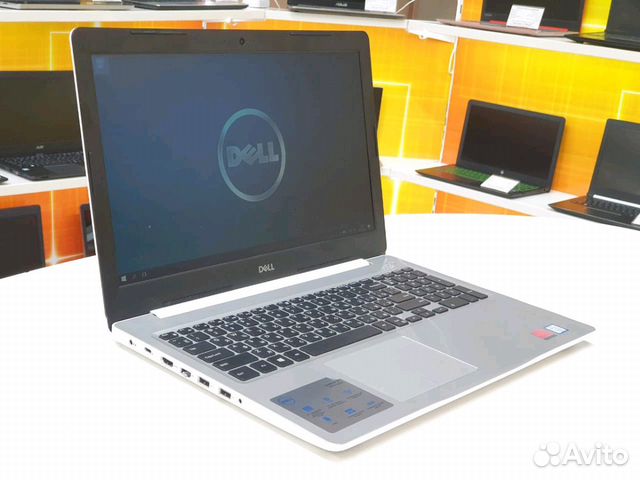 L1 cache
L1 cache
A larger L1 cache results in faster CPU and system-wide performance.
8.L2 core
2MB/core
0.25MB/core
More data can be stored in the L2 cache for access by each core of the CPU.
9.L3 core
Unknown. Help us by suggesting a value. (Intel Celeron N4000)
1.5MB/core
More data can be stored in the L3 cache for access by each core of the CPU.
Memory
1.RAM speed
2400MHz
2133MHz
It can support faster memory, which will give quicker system performance.
2.maximum memory bandwidth
38.4GB/s
34.1GB/s
This is the maximum rate that data can be read from or stored into memory.
3.DDR memory version
DDR (Double Data Rate) memory is the most common type of RAM. Newer versions of DDR memory support higher maximum speeds and are more energy-efficient.
4.memory channels
More memory channels increases the speed of data transfer between the memory and the CPU.
5.maximum memory amount
The maximum amount of memory (RAM) supported.
6.bus transfer rate
Unknown. Help us by suggesting a value. (Intel Celeron N4000)
The bus is responsible for transferring data between different components of a computer or device.
7.Supports ECC memory
✖Intel Celeron N4000
✖Intel Core i3-7020U
Error-correcting code memory can detect and correct data corruption. It is used when is it essential to avoid corruption, such as scientific computing or when running a server.
8.eMMC version
Unknown. Help us by suggesting a value. (Intel Celeron N4000)
Unknown. Help us by suggesting a value. (Intel Core i3-7020U)
A higher version of eMMC allows faster memory interfaces, having a positive effect on the performance of a device. For example, when transferring files from your computer to the internal storage over USB.
For example, when transferring files from your computer to the internal storage over USB.
9.bus speed
Unknown. Help us by suggesting a value. (Intel Celeron N4000)
Unknown. Help us by suggesting a value. (Intel Core i3-7020U)
The bus is responsible for transferring data between different components of a computer or device.
Benchmarks
1.PassMark result
This benchmark measures the performance of the CPU using multiple threads.
2.PassMark result (single)
This benchmark measures the performance of the CPU using a single thread.
3.Geekbench 5 result (multi)
Geekbench 5 is a cross-platform benchmark that measures a processor’s multi-core performance. (Source: Primate Labs, 2022)
4.Cinebench R20 (multi) result
Unknown. Help us by suggesting a value. (Intel Celeron N4000)
Unknown. Help us by suggesting a value. (Intel Core i3-7020U)
Help us by suggesting a value. (Intel Core i3-7020U)
Cinebench R20 is a benchmark tool that measures a CPU’s multi-core performance by rendering a 3D scene.
5.Cinebench R20 (single) result
Unknown. Help us by suggesting a value. (Intel Celeron N4000)
Unknown. Help us by suggesting a value. (Intel Core i3-7020U)
Cinebench R20 is a benchmark tool that measures a CPU’s single-core performance by rendering a 3D scene.
6.Geekbench 5 result (single)
Geekbench 5 is a cross-platform benchmark that measures a processor’s single-core performance. (Source: Primate Labs, 2022)
7.Blender (bmw27) result
Unknown. Help us by suggesting a value. (Intel Celeron N4000)
Unknown. Help us by suggesting a value. (Intel Core i3-7020U)
The Blender (bmw27) benchmark measures the performance of a processor by rendering a 3D scene. More powerful processors can render the scene in less time.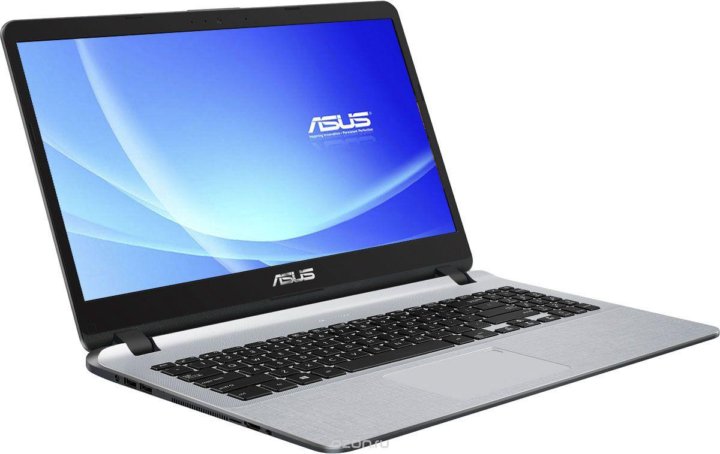
8.Blender (classroom) result
Unknown. Help us by suggesting a value. (Intel Celeron N4000)
Unknown. Help us by suggesting a value. (Intel Core i3-7020U)
The Blender (classroom) benchmark measures the performance of a processor by rendering a 3D scene. More powerful processors can render the scene in less time.
9.performance per watt
This means the CPU is more efficient, giving a greater amount of performance for each watt of power used.
Features
1.uses multithreading
✔Intel Celeron N4000
✔Intel Core i3-7020U
Multithreading technology (such as Intel’s Hyperthreading or AMD’s Simultaneous Multithreading) provides increased performance by splitting each of the processor’s physical cores into virtual cores, also known as threads. This way, each core can run two instruction streams at once.
2.Has AES
✔Intel Celeron N4000
✔Intel Core i3-7020U
AES is used to speed up encryption and decryption.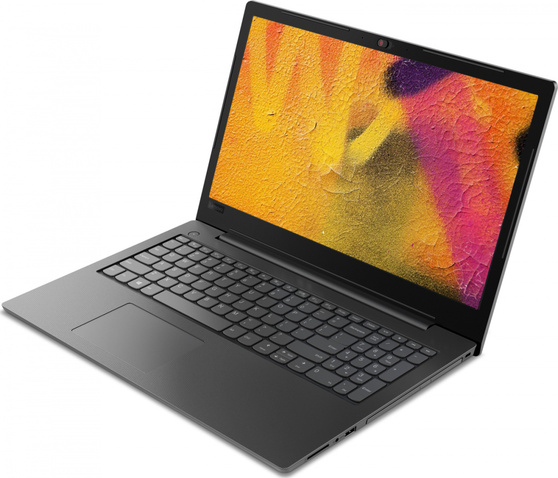
3.Has AVX
✖Intel Celeron N4000
✔Intel Core i3-7020U
AVX is used to help speed up calculations in multimedia, scientific and financial apps, as well as improving Linux RAID software performance.
4.SSE version
SSE is used to speed up multimedia tasks such as editing an image or adjusting audio volume. Each new version contains new instructions and improvements.
5.Has F16C
✖Intel Celeron N4000
✔Intel Core i3-7020U
F16C is used to speed up tasks such as adjusting the contrast of an image or adjusting volume.
6.bits executed at a time
Unknown. Help us by suggesting a value. (Intel Celeron N4000)
Unknown. Help us by suggesting a value. (Intel Core i3-7020U)
NEON provides acceleration for media processing, such as listening to MP3s.
7.Has MMX
✔Intel Celeron N4000
✔Intel Core i3-7020U
MMX is used to speed up tasks such as adjusting the contrast of an image or adjusting volume.
8.Has TrustZone
✖Intel Celeron N4000
✖Intel Core i3-7020U
A technology integrated into the processor to secure the device for use with features such as mobile payments and streaming video using digital rights management (DRM).
9.front-end width
Unknown. Help us by suggesting a value. (Intel Celeron N4000)
Unknown. Help us by suggesting a value. (Intel Core i3-7020U)
The CPU can decode more instructions per clock (IPC), meaning that the CPU performs better
Price comparison
Cancel
Which are the best CPUs?
Intel Core i3 7020U vs Celeron N4000: performance comparison
VS
Intel Core i3 7020U
Intel Celeron N4000
We compared two 2-core laptop CPUs: the 2.3 GHz Intel Core i3 7020U against the 1.1 GHz Celeron N4000. On this page, you’ll find out which processor has better performance in benchmarks, games and other useful information.
- Review
- Differences
- Performance
- Specs
- Comments
Review
General overview and comparison of the processors
Single-Core Performance
Performance in single-threaded apps and benchmarks
Core i3 7020U
31
Celeron N4000
23
Performance
Measure performance when all cores are involved
Core i3 7020U
8
Celeron N4000
4
Power Efficiency
The efficiency score of electricity consumption
Core i3 7020U
59
Celeron N4000
58
NanoReview Final Score
Generic CPU rating
Core i3 7020U
27
Celeron N4000
21
Key Differences
What are the key differences between N4000 and 7020U
Advantages of Intel Core i3 7020U
- Supports up to 32 GB DDR4-2133 RAM
- Newer PCI Express version – 3.
 0
0 - 37% faster in a single-core Geekbench v5 test — 578 vs 421 points
Advantages of Intel Celeron N4000
- Consumes up to 60% less energy than the Core i3 7020U – 6 vs 15 Watt
- Around 1.66 GB/s (5%) higher theoretical memory bandwidth
Benchmarks
Comparing the performance of CPUs in benchmarks
Cinebench R23 (Single-Core)
Core i3 7020U
n/a
Celeron N4000
434
Cinebench R23 (Multi-Core)
Core i3 7020U
n/a
Celeron N4000
718
Passmark CPU (Single-Core)
Core i3 7020U
+30%
1334
Celeron N4000
1027
Passmark CPU (Multi-Core)
Core i3 7020U
+84%
2586
Celeron N4000
1402
Geekbench 5 (Single-Core)
Core i3 7020U
+37%
582
Celeron N4000
424
Geekbench 5 (Multi-Core)
Core i3 7020U
+71%
1342
Celeron N4000
787
▶️ Submit your Cinebench R23 result
By purchasing through links on this site, we may receive a commission from Amazon.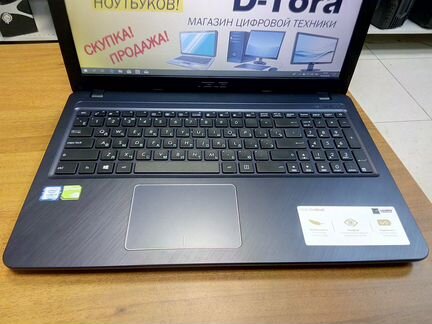 This does not affect our assessment methodology.
This does not affect our assessment methodology.
Specifications
Full technical specification of Intel Core i3 7020U and Celeron N4000
General
| Vendor | Intel | Intel |
| Released | April 1, 2018 | December 11, 2017 |
| Type | Laptop | Laptop |
| instruction set | x86-64 | x86-64 |
| Codename | Kaby Lake | Gemini Lake |
| Model number | i3-7020U | N4000 |
| Socket | BGA-1356 | BGA-1090 |
| Integrated GPU | HD Graphics 620 | UHD Graphics 600 |
Performance
| Cores | 2 | 2 |
| Threads | 4 | 2 |
| Base Frequency | 2. 3 GHz 3 GHz |
1.1 GHz |
| Multiplier | 23x | — |
| Bus Bandwidth | 4 GT/s | — |
| L1 Cache | 64K (per core) | 48K (per core) |
| L2 Cache | 256K (per core) | 4MB (per core) |
| L3 Cache | 3MB (shared) | — |
| Unlocked Multiplier | No | No |
| Fabrication process | 14 nm | 14 nm |
| TDP | 15 W | 6 W |
| Max. temperature | 100°C | 105°C |
| Integrated Graphics | Intel HD Graphics 620 | Intel UHD Graphics 600 |
| GPU Base Clock | 300 MHz | 200 MHz |
| GPU Boost Clock | 1000 MHz | 650 MHz |
| Shading Units | 192 | 96 |
| TMUs | 24 | 12 |
| ROPs | 3 | 2 |
| Execution Units | 24 | 12 |
| TGP | 15 W | 5 W |
Max. Resolution Resolution |
4096×2304 — 60 Hz | 3840×2160 — 30 Hz |
iGPU FLOPS
Core i3 7020U
0.4 TFLOPS
Celeron N4000
0.14 TFLOPS
Memory support
| Memory types | DDR4-2133, LPDDR3-1866, DDR3L-1600 | DDR4-2400, LPDDR4-2400 |
| Memory Size | 32 GB | 8 GB |
| Max. Memory Channels | 2 | 2 |
| Max. Memory Bandwidth | 34.1 GB/s | 35.76 GB/s |
| ECC Support | No | No |
| Official site | Intel Core i3 7020U official page | Intel Celeron N4000 official page |
| PCI Express Version | 3.0 | 2.0 |
| PCI Express Lanes | 12 | 6 |
| Extended instructions | SSE4. 1, SSE4.2, AVX-2 1, SSE4.2, AVX-2 |
SSE4.2 |
Cast your vote
Choose between two processors
Core i3 7020U
11 (64.7%)
Celeron N4000
6 (35.3%)
Total votes: 17
ompetitors
1.
AMD Ryzen 5 3500U and Intel Core i3 7020U
2.
AMD Ryzen 3 3200U and Intel Celeron N4000
3.
Intel Core i5 5200U and Celeron N4000
4.
Intel Celeron N4500 and Celeron N4000
Intel Core i3-7020U vs Intel Celeron N4000
|
|
|
|
|
Intel Core i3-7020U vs Intel Celeron N4000
Comparison of the technical characteristics between the processors, with the Intel Core i3-7020U on one side and the Intel Celeron N4000 on the other side. The first is dedicated to the laptop sector, It has 2 cores, 4 threads, a maximum frequency of 2,3GHz. The second is used on the entry-level notebook segment, it has a total of 2 cores, 2 threads, its turbo frequency is set to 2,6 GHz. The following table also compares the lithography, the number of transistors (if indicated), the amount of cache memory, the maximum RAM memory capacity, the type of memory accepted, the release date, the maximum number of PCIe lanes, the values obtained in Geekbench 4 and Cinebench R15.
The first is dedicated to the laptop sector, It has 2 cores, 4 threads, a maximum frequency of 2,3GHz. The second is used on the entry-level notebook segment, it has a total of 2 cores, 2 threads, its turbo frequency is set to 2,6 GHz. The following table also compares the lithography, the number of transistors (if indicated), the amount of cache memory, the maximum RAM memory capacity, the type of memory accepted, the release date, the maximum number of PCIe lanes, the values obtained in Geekbench 4 and Cinebench R15.
Note: Commissions may be earned from the links above.
This page contains references to products from one or more of our advertisers. We may receive compensation when you click on links to those products. For an explanation of our advertising policy, please visit this page.
Specifications:
| Processor | Intel Core i3-7020U | Intel Celeron N4000 | ||||||
| Market (main) | Laptop | Entry-level notebook | ||||||
| ISA | x86-64 (64 bit) | x86-64 (64 bit) | ||||||
| Microarchitecture | Kaby Lake | Goldmont Plus | ||||||
| Core name | Kaby Lake-U | Gemini Lake | ||||||
| Family | Core i3-7000 | Celeron 4000 | ||||||
| Part number(s), S-Spec | FH8067703037315, FJ8067702739769, FJ8067703282620 SR3LD, SR3N6, SR3TK |
FH8068003067417, SR3S1 |
||||||
| Release date | Q2 2018 | Q4 2017 | ||||||
| Lithography | 14 nm+ | 14 nm | ||||||
| Cores | 2 | 2 | ||||||
| Threads | 4 | 2 | ||||||
| Base frequency | 2,3 GHz | 1,1 GHz | ||||||
| Turbo frequency | — | 2,6 GHz | ||||||
| Cache memory | 3 MB | 4 MB | ||||||
| Max memory capacity | 32 GB | 8 GB | ||||||
| Memory types | DDR4-2133, LPDDR3-1866, DDR3L-1600 |
DDR4/LPDDR4 | ||||||
| Max # of memory channels | 2 | 2 | ||||||
| Max memory bandwidth | 34,1 GB/s | 38,4 GB/s | ||||||
| Max PCIe lanes | 12 | 6 | ||||||
| TDP | 15 W | 6 W | ||||||
| GPU integrated graphics | Intel HD Graphics 620 | Intel UHD Graphics 600 | ||||||
| GPU execution units | 24 | 12 | ||||||
| GPU shading units | 192 | 96 | ||||||
| GPU base clock | 300 MHz | 200 MHz | ||||||
| GPU boost clock | 1000 MHz | 650 MHz | ||||||
| GPU FP32 floating point | 403,2 GFLOPS | 144 GFLOPS | ||||||
| Socket | BGA1356 | BGA1090 | ||||||
| Maximum temperature | 100°C | 105°C | ||||||
| CPU-Z single thread | 211 | 177 | ||||||
| CPU-Z multi thread | 648 | 349 | ||||||
| Cinebench R15 single thread | 90 | 70 | ||||||
| Cinebench R15 multi-thread | 230 | 137 | ||||||
| PassMark single thread | 1. 327 327 |
1.012 | ||||||
| PassMark CPU Mark | 2.561 | 1.416 | ||||||
| (Windows 64-bit) Geekbench 4 single core |
2.614 | 1.810 | ||||||
| (Windows 64-bit) Geekbench 4 multi-core |
5.089 | 3.063 | ||||||
| (SGEMM) GFLOPS performance |
81,1 GFLOPS | 22,6 GFLOPS | ||||||
| (Multi-core / watt performance) Performance / watt ratio |
339 pts / W | 511 pts / W | ||||||
| Amazon | ||||||||
| eBay |
Note: Commissions may be earned from the links above.
We can better compare what are the technical differences between the two processors.
Price: For technical reasons, we cannot currently display a price less than 24 hours, or a real-time price. This is why we prefer for the moment not to show a price. You should refer to the respective online stores for the latest price, as well as availability.
We see that the two processors have an equivalent number of cores, the turbo frequency of Intel Celeron N4000 is bigger, that the thermal dissipation power of Intel Celeron N4000 is less. The Intel Core i3-7020U was designed earlier.
Performances :
Performance comparison between the two processors, for this we consider the results generated on benchmark software such as Geekbench 4.
| CPU-Z — Multi-thread & single thread score | |
|---|---|
| Intel Core i3-7020U |
211 648 |
| Intel Celeron N4000 |
177 349 |
In single core, the difference is 19%. In multi-core, the differential gap is 86%.
In multi-core, the differential gap is 86%.
Note: Commissions may be earned from the links above. These scores are only an
average of the performances got with these processors, you may get different results.
CPU-Z is a system information software that provides the name of the processor, its model number, the codename, the cache levels, the package, the process. It can also gives data about the mainboard, the memory. It makes real time measurement, with finally a benchmark for the single thread, as well as for the multi thread.
| Cinebench R15 — Multi-thread & single thread score | |
|---|---|
| Intel Core i3-7020U |
90 230 |
| Intel Celeron N4000 |
70 137 |
In single core, the difference is 29%. In multi-core, the differential gap is 68%.
Note: Commissions may be earned from the links above. These scores are only an
average of the performances got with these processors, you may get different results.
Cinebench R15 evaluates the performance of CPU calculations by restoring a photorealistic 3D scene. The scene has 2,000 objects, 300,000 polygons, uses sharp and fuzzy reflections, bright areas, shadows, procedural shaders, antialiasing, and so on. The faster the rendering of the scene is created, the more powerful the PC is, with a high number of points.
| PassMark — CPU Mark & single thread | |
|---|---|
| Intel Core i3-7020U |
1.327 2.561 |
| Intel Celeron N4000 |
1.012 1.416 |
In single core, the difference is 31%. In multi-core, the differential gap is 81%.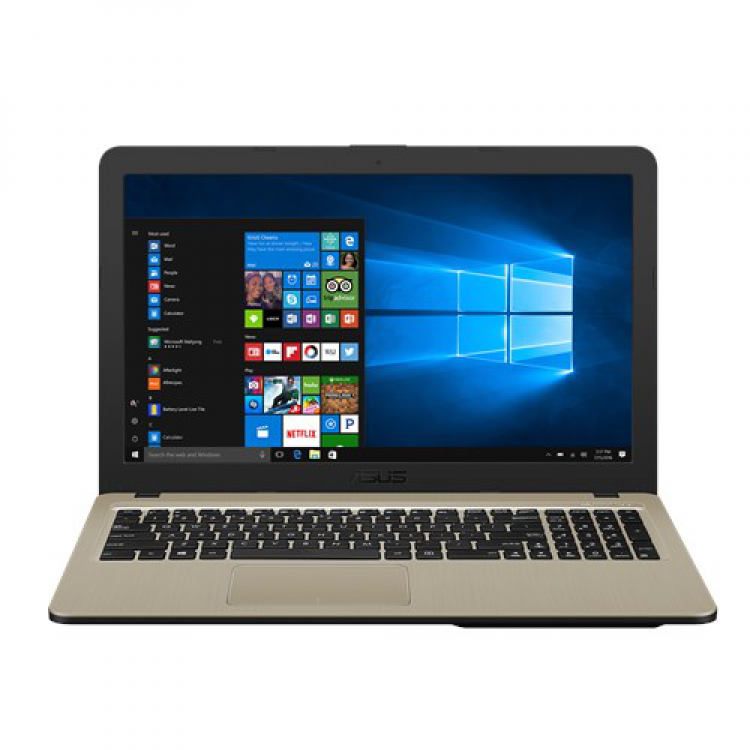
Note: Commissions may be earned from the links above. These scores are only an
average of the performances got with these processors, you may get different results.
PassMark is a benchmarking software that performs several performance tests including prime numbers, integers, floating point, compression, physics, extended instructions, encoding, sorting. The higher the score is, the higher is the device capacity.
On Windows 64-bit:
| Geekbench 4 — Multi-core & single core score — Windows 64-bit | |
|---|---|
| Intel Core i3-7020U |
2.614 5.089 |
| Intel Celeron N4000 |
1.810 3.063 |
In single core, the difference is 44%. In multi-core, the differential gap is 66%.
On Linux 64-bit:
| Geekbench 4 — Multi-core & single core score — Linux 64-bit | |
|---|---|
| Intel Core i3-7020U |
2.  837 8374.361 |
| Intel Celeron N4000 |
2.016 3.131 |
In single core, the difference is 41%. In multi-core, the differential gap is 39%.
On Android 64-bit:
| Geekbench 4 — Multi-core & single core score — Android 64-bit | |
|---|---|
| Intel Celeron N4000 |
2.054 3.682 |
| Intel Core i3-7020U |
2.052 3.144 |
In single core, the difference is 0%. In multi-core, the difference in terms of gap is 17%.
Note: Commissions may be earned from the links above. These scores are only an
average of the performances got with these processors, you may get different results.
Geekbench 4 is a complete benchmark platform with several types of tests, including data compression, images, AES encryption, SQL encoding, HTML, PDF file rendering, matrix computation, Fast Fourier Transform, 3D object simulation, photo editing, memory testing. This allows us to better visualize the respective power of these devices. For each result, we took an average of 250 values on the famous benchmark software.
This allows us to better visualize the respective power of these devices. For each result, we took an average of 250 values on the famous benchmark software.
Equivalence:
Intel Core i3-7020U AMD equivalentIntel Celeron N4000 AMD equivalent
Intel Celeron N4000 vs Intel Core i3-7020U: What is the difference?
44 BALLLA
Intel Celeron N4000
44 BALLLA
Intel Core i3-7020U
64 Facts compared to
Intel Celeron N4000 -7020U?
- 267MHz higher RAM speed?
2400MHz vs 2133MHz - 3.5MB more L2 cache?
4MB vs 0.5MB - 9W below TDP?
6W vs 15W - 1.75MB/core more L2 cache per core? more memory bandwidth?
38.4GB/s vs 34.1GB/s - 31.1 higher performance per watt?
113.7 vs 82. 6
6
Why is Intel Core i3-7020U better than Intel Celeron N4000?
- 2.09x higher CPU speed?
2 x 2.3GHz vs 2 x 1.1GHz - 2 more CPU threads?
4 vs 2 - GPU frequency 100MHz higher?
300MHz vs 200MHz - 1.8x higher PassMark result?
2579 vs 1436 - 1 newer version of PCI Express (PCIe)?
3 vs 2 - 16KB more L1 cache?
128KB vs 112KB - 28.56% higher PassMark score (single)?
1337 vs 1040 - 24GB more max memory?
32GB vs 8GB
Which comparisons are the most popular?
Intel Celeron N4000
vs
Intel Core i3-6100U
Intel Core i3-7020U
vs
Intel Celeron N4020
Intel0 Celer0 N
VS
AMD Athlon 300u
Intel Core i3-7020u
VS
A4-9125
Intel Celeron N4000
VS
VS
9000 AMD RYZEN 3 2200U
Intel Celeron N4000
VS
Intel Celeron N4020
Intel Core i3-7020U
VS
A9-9425
Intel Celeron N4000
VS 9000 9000 9000 9000 9000 9000)0003
Intel Core i3-7020U
vs
Intel Celeron N4120
Intel Celeron N4000
vs
AMD Ryzen 3 2200U
Intel Core i3-7020U
vs
AMD Athlon 300U
Intel Celeron N4000
VS
AMD 3020E
Intel Core i3-7020U
VS
AMD 3020E
Intel Celeron N4000
VS
AMD Athlon Silver 9000u 9000u 9000u 9000u 9000u 9000u
vs
Intel Pentium Gold 5405U
Intel Celeron N4000
vs
AMD Ryzen 3 3200U
Intel Core i3-7020U
vs
AMD Ryzen 3 3200U
Intel Celeron N4000
vs
Intel Core i5-6200U
Intel Core i3-7020U
vs
Intel Core i3-1115G4
Price Comparison
User Reviews
Overall Rating
Intel0 Celeron
2 reviews of users
Intel Celeron N4000
/10
2 Reviews of users
Intel Core i3-7020U
4 Users
Intel Core i3-7020u
9000 9000 9000 9000 9000 9000 9000 9000 9000 9000 9000 9000 9000 9000 9000 9000 4 User reviews
Features
Value for money
10. 0 /10
0 /10
1 votes
5.8 /10
900 04 Games0003
1.0 /10
1 votes
5.8 /10
4 Votes
performance
3.0 /10
1 votes
7.5 /10,000 9000 Votes
1.0 /10
1 votes
8.0 /10
4 Votes
Energy
6.0 /10
1 Votes
8.8 /10
4 votes
Performance
1.CPU speed
2 x 1.1GHz
2 x 2.3GHz
CPU speed indicates how many processing cycles per second a processor can perform, given all its cores (processors). It is calculated by adding the clock speeds of each core or, in the case of multi-core processors, each group of cores.
2nd processor thread
More threads result in better performance and better multitasking.
3.speed turbo clock
2. 6GHz
6GHz
Unknown. Help us offer a price. (Intel Core i3-7020U)
When the processor is running below its limits, it can jump to a higher clock speed to increase performance.
4. Unlocked
✖Intel Celeron N4000
✖Intel Core i3-7020U
Some processors come with an unlocked multiplier and can be easily overclocked for better performance in games and other applications.
5.L2 cache
More L2 scratchpad memory results in faster results in CPU and system performance tuning.
6.L3 cache
Unknown. Help us offer a price. (Intel Celeron N4000)
More L3 scratchpad memory results in faster results in CPU and system performance tuning.
7.L1 cache
More L1 cache results in faster results in CPU and system performance tuning.
8.core L2
2MB/core
0. 25MB/core
25MB/core
More data can be stored in the L2 scratchpad for access by each processor core.
9. L3 core
Unknown. Help us offer a price. (Intel Celeron N4000)
1.5MB/core
More data can be stored in the L3 scratchpad for access by each processor core.
Memory
1.RAM speed
2400MHz
2133MHz
Can support faster memory which speeds up system performance.
2.max memory bandwidth
38.4GB/s
34.1GB/s
This is the maximum rate at which data can be read from or stored in memory.
3. DDR version
DDR (Dynamic Dynamic Random Access Memory Double Data Rate) is the most common type of RAM. New versions of DDR memory support higher maximum speeds and are more energy efficient.
4.Memory channels
More memory channels increase the speed of data transfer between memory and processor.
5.maximum memory capacity
Maximum memory capacity (RAM).
6.bus baud rate
Unknown. Help us offer a price. (Intel Celeron N4000)
The bus is responsible for transferring data between various components of a computer or device.
7.Supports memory troubleshooting code
✖Intel Celeron N4000
✖Intel Core i3-7020U
Memory error recovery code can detect and repair data corruption. It is used when necessary to avoid distortion, such as in scientific computing or when starting a server.
8.eMMC version
Unknown. Help us offer a price. (Intel Celeron N4000)
Unknown. Help us offer a price. (Intel Core i3-7020U)
Newer version of eMMC — built-in flash memory card — speeds up the memory interface, has a positive effect on device performance, for example, when transferring files from a computer to internal memory via USB.
9.bus frequency
Unknown. Help us offer a price. (Intel Celeron N4000)
Unknown. Help us offer a price. (Intel Core i3-7020U)
The bus is responsible for transferring data between various components of a computer or device
Geotagging
1. PassMark result
This test measures processor performance using multi-threading.
2. PassMark result (single)
This test measures processor performance using a thread of execution.
3.Geekbench 5 result (multi-core)
Geekbench 5 is a cross-platform benchmark that measures the performance of a multi-core processor. (Source: Primate Labs,2022)
4. Cinebench R20 result (multi-core)
Unknown. Help us offer a price. (Intel Celeron N4000)
Unknown. Help us offer a price. (Intel Core i3-7020U)
Cinebench R20 is a benchmark that measures the performance of a multi-core processor by rendering a 3D scene.
5.Cinebench R20 result (single core)
Unknown. Help us offer a price. (Intel Celeron N4000)
Unknown. Help us offer a price. (Intel Core i3-7020U)
Cinebench R20 is a test to evaluate the performance of a single core processor when rendering a 3D scene.
6.Geekbench 5 result (single core)
Geekbench 5 is a cross-platform test that measures the single core performance of a processor. (Source: Primate Labs, 2022)
7. Blender test result (bmw27)
Unknown. Help us offer a price. (Intel Celeron N4000)
Unknown. Help us offer a price. (Intel Core i3-7020U)
The Blender benchmark (bmw27) measures CPU performance by rendering a 3D scene. More powerful processors can render a scene in a shorter time.
8.Blender result (classroom)
Unknown. Help us offer a price. (Intel Celeron N4000)
Unknown. Help us offer a price. (Intel Core i3-7020U)
Help us offer a price. (Intel Core i3-7020U)
The Blender benchmark (classroom) measures CPU performance by rendering a 3D scene. More powerful processors can render a scene in a shorter time.
9.performance per watt
This means that the processor is more efficient, giving more performance per watt of power used.
Functions
1.uses multithreading
✔Intel Celeron N4000
✔Intel Core i3-7020U
Multithreading technology (such as Intel’s Hyperthreading or AMD’s Simultaneous Multithreading) provides higher performance by dividing each physical processor core into logical cores, also known as threads . Thus, each core can run two instruction streams at the same time.
2. Has AES
✔Intel Celeron N4000
✔Intel Core i3-7020U
AES is used to speed up encryption and decryption.
3. Has AVX
Has AVX
✖Intel Celeron N4000
✔Intel Core i3-7020U
AVX is used to help speed up calculations in multimedia, scientific and financial applications, and to improve the performance of the Linux RAID program.
4.Version SSE
SSE is used to speed up multimedia tasks such as editing images or adjusting audio volume. Each new version contains new instructions and improvements.
5. Has F16C
✖Intel Celeron N4000
✔Intel Core i3-7020U
F16C is used to speed up tasks such as adjusting image contrast or adjusting volume.
6.bits transmitted at the same time
Unknown. Help us offer a price. (Intel Celeron N4000)
Unknown. Help us offer a price. (Intel Core i3-7020U)
NEON provides faster media processing such as MP3 listening.
7. Has MMX
✔Intel Celeron N4000
✔Intel Core i3-7020U
MMX is used to speed up tasks such as adjusting image contrast or adjusting volume.
8. TrustZone enabled
✖Intel Celeron N4000
✖Intel Core i3-7020U
Technology is integrated into the processor to ensure device security when using features such as mobile payments and digital rights management (DRM) video streaming .
9.interface width
Unknown. Help us offer a price. (Intel Celeron N4000)
Unknown. Help us offer a price. (Intel Core i3-7020U)
The processor can decode more instructions per clock (IPC), which means that the processor performs better
Price comparison
Cancel
Which CPUs are better?
Intel Core i3 7020U vs Celeron N4000:
performance comparison
VS
Intel Core i3 7020U
Intel Celeron N4000
Which is better: Intel Core i3 7020U at 2.3 GHz or Celeron N4000 at 1.1 GHz? To find out, read our comparative testing of these 2-core laptop processors in popular benchmarks, games and heavy applications.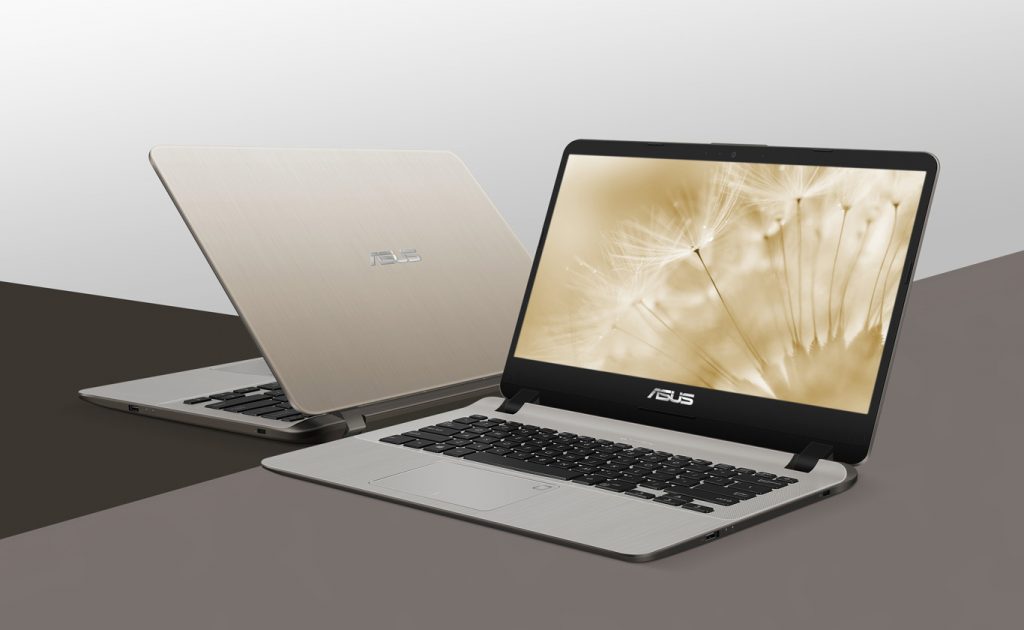
- Overview
- Differences
- Performance
- Features
- Comments
Overview
Overview and comparison of the main metrics from NanoReview
Single -flow performance
Rating in tests using one kernel
Core I3 7020U
31
Celeron N4000
23
Multi -WEACHEMENCY
Tests in benchmarks, where all nuclei are used
Core I3 7020u 9000u 9000.
Celeron N4000
4
Energy Efficiency
Chip Energy Efficiency
Core i3 7020u
59
Celeron N4000
58
Rating NanoreView
Final rating of the processor
Core I3 7020u
Celeron N4000
21
Key differences
What are the main differences between N4000 and 7020U
Reasons to choose Intel Core i3 7020U
- Supports up to 32GB DDR4-2133
- New PCI Express 3.
 0 standard
0 standard - 37% faster in single core Geekbench v5 — 578 and 421 points
Reasons to choose Intel Celeron N4000
- 60% lower than Core i3 7020U peak power consumption — 6 vs 15 Watts
- 1.66 GB/s (5%) higher maximum memory bandwidth
Benchmark tests
Compare the results of processor tests in benchmarks
Cinebench R23 (single core)
Core i3 7020U
n/d
Celeron N4000
434
Cinebench R23 (multi -core)
Core I3 7020U
N/D
Celeron N4000
718
Passmark CPU (AND
+30%
1334
Celeron N4000
1027
Passmark CPU (multi-core)
Core i3 7020U
+84%
2586
Celeron N4000
1402
Geekbench 5 (single core)
Core i3 7020U
+37%
582
Celeron N4000
424
Geekbench 5 (multi-core)
Core i3 7020U
+71%
1342
Celeron N4000
787
▶️ Add your score to Cinebench R23
Specifications
List of full technical specifications of Intel Core i3 7020U and Celeron N4000
General information
| Manufacturer | Intel | Intel |
| Release date | April 1, 2018 | December 11, 2017 |
| Type | For laptop | For laptop |
| Instruction set architecture | x86-64 | x86-64 |
| Codename | Kaby Lake | Gemini Lake |
| Model number | i3-7020U | N4000 |
| Socket | BGA-1356 | BGA-1090 |
| Integrated graphics | HD Graphics 620 | UHD Graphics 600 |
Capacity
| Number of cores | 2 | 2 |
| Number of threads | 4 | 2 |
| Frequency | 2. 3 GHz 3 GHz |
1.1 GHz |
| Multiplier | 23x | — |
| Bus speed | 4 GT/s | — |
| Level 1 cache | 64KB (per core) | 48KB (per core) |
| Level 2 cache | 256KB (per core) | 4MB (per core) |
| Level 3 cache | 3MB (shared) | — |
| Unlocked multiplier | No | No |
Energy consumption
| Process technology | 14 nanometers | 14 nanometers |
| Power consumption (TDP) | 15W | 6W |
| Critical temperature | 100°C | 105°C |
| Integrated graphics | Intel HD Graphics 620 | Intel UHD Graphics 600 |
| GPU frequency | 300 MHz | 200 MHz |
| Boost GPU frequency | 1000 MHz | 650 MHz |
| Shader blocks | 192 | 96 |
| TMUs | 24 | 12 |
| ROPs | 3 | 2 |
| Computer units | 24 | 12 |
| TGP | 15W | 5W |
Max. resolution resolution |
4096×2304 — 60Hz | 3840×2160 — 30Hz |
iGPU FLOPS
Core i3 7020U
0.4 teraflops
Celeron N4000
0.14 teraflops
Memory support
| Memory type | DDR4-2133, LPDDR3-1866, DDR3L-1600 | DDR4-2400, LPDDR4-2400 |
| Max. size | 32 GB | 8 GB |
| Number of channels | 2 | 2 |
| Max. bandwidth | 34.1 GB/s | 35.76 GB/s |
| ECC support | No | No |
Other
| Official site | Site Intel Core i3 7020U | Site Intel Celeron N4000 |
| PCI Express version | 3.0 | 2.0 |
| Max. PCI Express lanes | 12 | 6 |
| Extended instructions | SSE4. 1, SSE4.2, AVX-2 1, SSE4.2, AVX-2 |
SSE4.2 |
Poll
What processor do you think is the best?
Core i3 7020U
11 (64.7%)
Celeron N4000
6 (35.3%)
Total votes: 17
Competitors
1.
AMD Ryzen 5 3500U or Intel Core i3 7020U
2.
AMD Ryzen 3 3200U or Intel Celeron N4000
3.
Intel Core i5 5200U or Celeron N4000
4.
Intel Celeron N4500 or Celeron N4000
What will you choose: Intel Celeron N4000 or Core i3 7020U?
Name
Message
Intel Celeron N4000 vs. Intel Core i3-7020U
Intel Celeron N4000
Intel Celeron N4000 runs with 2 and 2 CPU threads It runs at 2.60 GHz base 2.60 GHz all cores while TDP is set to 6 W .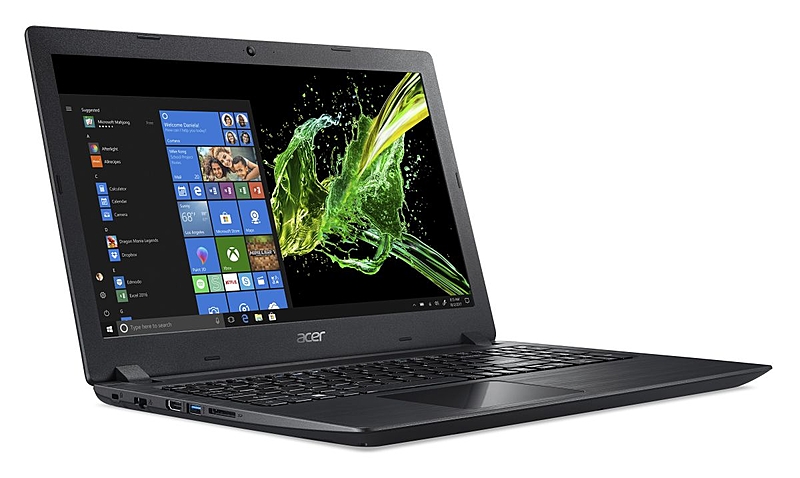 CPU connects to BGA 1090 CPU socket This version includes 4.00 MB L3 cache on a single die, supports 2 to support DDR4-2400 RAM, and supports 2.0 PCIe Gen 6 . Tjunction is kept below — degrees C. In particular, the Gemini Lake Architecture is advanced beyond 10 nm and supports VT-x, VT-x EPT, VT-d . The product was launched Q4/2017
CPU connects to BGA 1090 CPU socket This version includes 4.00 MB L3 cache on a single die, supports 2 to support DDR4-2400 RAM, and supports 2.0 PCIe Gen 6 . Tjunction is kept below — degrees C. In particular, the Gemini Lake Architecture is advanced beyond 10 nm and supports VT-x, VT-x EPT, VT-d . The product was launched Q4/2017
Intel Core i3-7020U
Intel Core i3-7020U runs with 2 and 2 CPU threads It runs on No turbo base No turbo all cores while TDP is set to 15W .CPU connects to BGA 1356 CPU socket This version includes 3.00 MB of L3 cache on a single die, supports 2 to support DDR4-2133 SO-DIMM RAM, and supports 3.0 PCIe Gen 12. Tjunction is kept below 100°C degrees C. Specifically, Kaby Lake U architecture is advanced beyond 14 nm and supports VT-x, VT-x EPT, VT-d . The product was launched Q3/2018
Intel Celeron N4000
Intel Core i3-7020U
 60GHz
60GHz Intel UHD Graphics 600
Intel HD Graphics 620

Show more details
Show more details
Cinebench R15 (Single-Core)
Cinebench R15 is the successor to Cinebench 11.5 and is also based on Cinema 4 Suite. Cinema 4 is software used all over the world to create 3D forms. The single-core test uses only one CPU core, the number of cores or hyper-threading capability is not taken into account.
The single-core test uses only one CPU core, the number of cores or hyper-threading capability is not taken into account.
Cinebench R15 (Multi-Core)
Cinebench R15 is the successor to Cinebench 11.5 and is also based on Cinema 4 Suite. Cinema 4 is software used all over the world to create 3D forms. The multi-core test uses all the CPU cores and has a big advantage of hyper-threading.
Geekbench 5, 64bit (Single-Core)
Geekbench 5 is a memory-intensive cross-platform test. A fast memory will greatly push the result. The single-core test uses only one CPU core, the number of cores or hyper-threading capability is not taken into account.
Geekbench 5, 64bit (Multi-Core)
Geekbench 5 is a memory-intensive, cross-platform test. A fast memory will greatly push the result. The multi-core test uses all the CPU cores and has a big advantage of hyper-threading.
iGPU — FP32 Performance (Single-precision GFLOPS)
Theoretical processing performance of the processor’s internal graphics unit with simple precision (32 bits) in GFLOPS.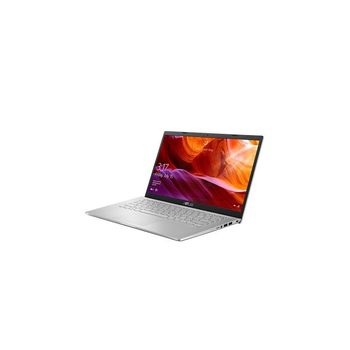 GFLOPS specifies how many billions of floating point operations the iGPU can perform per second.
GFLOPS specifies how many billions of floating point operations the iGPU can perform per second.
Blender 2.81 (bmw27)
Blender is a free 3D graphics software for rendering (creating) 3D bodies that can also be textured and animated in the program. The Blender test creates predefined scenes and measures the time(s) required for the entire scene. The less time it takes, the better. We chose the bmw27 as our reference scene.
Geekbench 3, 64bit (Single-Core)
Geekbench 3 is a cross-platform benchmark that is memory intensive. A fast memory will greatly push the result. The single-core test uses only one CPU core, the number of cores or hyper-threading capability is not taken into account.
Geekbench 3, 64bit (Multi-Core)
Geekbench 3 is a cross-platform benchmark that is memory intensive. A fast memory will greatly push the result. The multi-core test uses all the CPU cores and has a big advantage of hyper-threading.
Cinebench R11.

